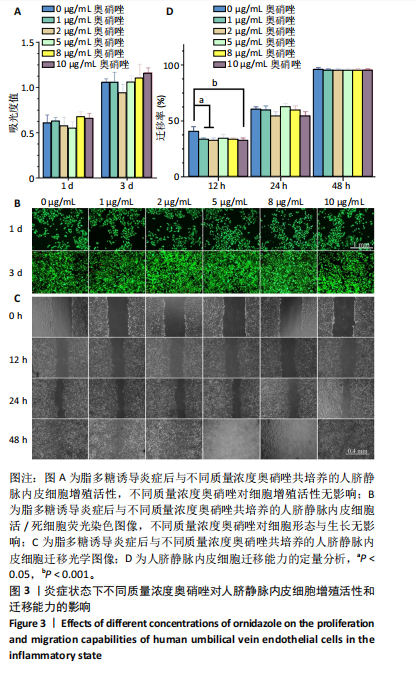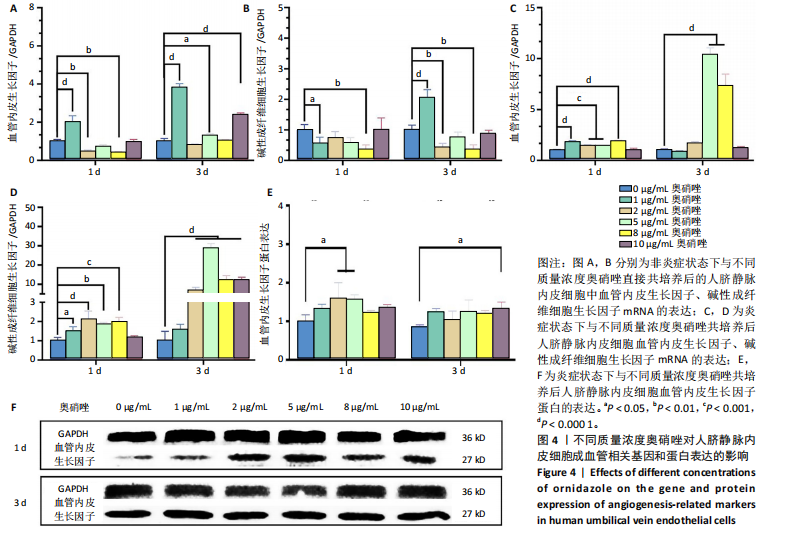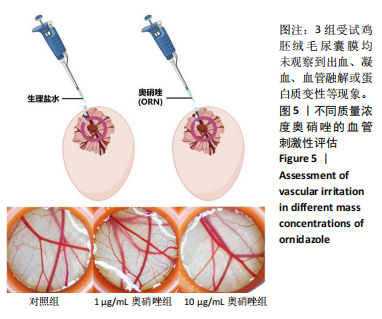[1] GALLER K M, WEBER M, KORKMAZ Y, et al. Inflammatory Response Mechanisms of the Dentine-Pulp Complex and the Periapical Tissues. Int J Mol Sci. 2021;22(3):1480.
[2] TATULLO M, MARRELLI M, SHAKESHEFF KM, et al. Dental pulp stem cells: function, isolation and applications in regenerative medicine. J Tissue Eng Regener Med. 2015;9(11):1205-1216.
[3] LEÓN-LÓPEZ M, CABANILLAS-BALSERA D, MARTÍN-GONZÁLEZ J, et al. Prevalence of root canal treatment worldwide: A systematic review and meta-analysis. Int Endod J. 2022;55(11):1105-1127.
[4] LU JM, LI ZH, WU X, et al. iRoot BP Plus promotes osteo/odontogenic differentiation of bone marrow mesenchymal stem cells via MAPK pathways and autophagy. Stem Cell Res Ther. 2019;10:1-14.
[5] SIQUEIRA JF. Aetiology of root canal treatment failure: why well-treated teeth can bail. Int Endod J. 2001;34(1):1-10.
[6] RODRIGUES M, KOSARIC N, BONHAM CA, et al. Wound healing: a cellular perspective. Physiol Rev. 2019;99(1):665-706.
[7] HERBERT SP, STAINIER DYR. Molecular control of endothelial cell behaviour during blood vessel morphogenesis. Nat Rev Mol Cell Biol. 2011;12(9):551-564.
[8] KOTTOOR J, VELMURUGAN N. Revascularization for a necrotic immature permanent lateral incisor: a case report and literature review. Int J Paediatr Dent. 2013;23(4):310-316.
[9] MEHRVARZFAR P, ABBOTT PV, AKHAVAN H, et al. Modified Revascularization in Human Teeth Using an Intracanal Formation of Treated Dentin Matrix: A Report of Two Cases. J Int Soc Prev Community Dent. 2017;7(4):218-221.
[10] ZHANG S, ZHANG W, LI Y, et al. Cotransplantation of human umbilical cord mesenchymal stem cells and endothelial cells for angiogenesis and pulp regeneration in vivo. Life Sci. 2020;255:117763.
[11] HUANG X, LI Z, LIU A, et al. Microenvironment Influences Odontogenic Mesenchymal Stem Cells Mediated Dental Pulp Regeneration. Front Physiol. 2021;12:656588.
[12] XIA K, CHEN Z, CHEN J, et al. RGD- and VEGF-Mimetic Peptide Epitope-Functionalized Self-Assembling Peptide Hydrogels Promote Dentin-Pulp Complex Regeneration. Int J Nanomed. 2020;15:6631-6647.
[13] MILTIADOUS ME, FLORATOS SG. Regenerative Endodontic Treatment as a Retreatment Option for a Tooth with Open Apex - A Case Report. Braz Dent J. 2015;26(5):552-556.
[14] HILKENS P, BRONCKAERS A, RATAJCZAK J, et al. The Angiogenic Potential of DPSCs and SCAPs in an <i>In Vivo</i> Model of Dental Pulp Regeneration. Stem Cells Int. 2017;2017(1):2582080.
[15] DOS SANTOS LRK, PELEGRINE AA, BUENO CED, et al. Pulp-Dentin Complex Regeneration with Cell Transplantation Technique Using Stem Cells Derived from Human Deciduous Teeth: Histological and Immunohistochemical Study in Immunosuppressed Rats. Bioengineering (Basel). 2023;10(5):610.
[16] DIOGUARDI M, DI GIOIA G, ILLUZZI G, et al. Inspection of the Microbiota in Endodontic Lesions. Dent J (Basel). 2019;7(2):47.
[17] LACEVIC A, BILALOVIC N, KAPIC A. Bacterial aggregation in infected root canal. Bosn J Basic Med Sci. 2005;5(4):35-39.
[18] ZHANG C, YANG Z, HOU B. Diverse bacterial profile in extraradicular biofilms and periradicular lesions associated with persistent apical periodontitis. Int Endod J. 2021;54(9):1425-1433.
[19] KIRYU T, HOSHINO E, IWAKU M. Bacteria invading periapical cementum. J Endod. 1994;20(4):169-172.
[20] ZHANG W, WANG QQ, WANG KR, et al. Construction of an ornidazole/bFGF-loaded electrospun composite membrane with a core-shell structure for guided tissue regeneration. Mater Des. 2022;221:110960.
[21] SABRAH AHA, YASSEN GH, SPOLNIK KJ, et al. Evaluation of residual antibacterial effect of human radicular dentin treated with triple and double antibiotic pastes. J Endod. 2015;41(7):1081-1084.
[22] DUBEY N, XU J, ZHANG Z, et al. Comparative Evaluation of the Cytotoxic and Angiogenic Effects of Minocycline and Clindamycin: An In Vitro Study. J Endod. 2019;45(7):882-889.
[23] ZHAO Y, CHEN Z, HUANG P, et al. Analysis of Ornidazole injection in clinical use at post-marketing stage by centralized hospital monitoring system. Curr Med Sci. 2019;39:836-842.
[24] TORT H, OKTAY EA, TORT S, et al. Evaluation of ornidazole-loaded nanofibers as an alternative material for direct pulp capping. J Drug Delivery Sci Technol. 2017;41:317-324.
[25] TASANARONG P, AYUDHYA TDN, TECHANITISWAD T, et al. Reduction of viable bacteria in dentinal tubules treated with a novel medicament (Z-Mix). J Dent Sci. 2016;11(4):419-426.
[26] ZHANG SY, THIEBES AL, KREIMENDAHL F, et al. Extracellular Vesicles-Loaded Fibrin Gel Supports Rapid Neovascularization for Dental Pulp Regeneration. Int J Mol Sci. 2020;21(12):4226.
[27] 王玉娟,褚美芬,罗冬娇,等.不同5′-硝基咪唑类药物治疗厌氧菌性及滴虫性阴道炎临床疗效比较[J].上海医学,2006,29(6):375-378.
[28] GIRAUD T, JEANNEAU C, ROMBOUTS C, et al. Pulp capping materials modulate the balance between inflammation and regeneration. Dent Mater. 2019;35(1):24-35.
[29] GOLDBERG M, NJEH A, UZUNOGLU E. Is pulp inflammation a prerequisite for pulp healing and regeneration? Mediators Inflammation. 2015;2015(1):347649.
[30] BINDAL P, RAMASAMY TS, KASIM NHA, et al. Immune responses of human dental pulp stem cells in lipopolysaccharide‐induced microenvironment. Cell Biol Int. 2018;42(7):832-840.
[31] IOHARA K, TOMINAGA M, WATANABE H, et al. Periapical bacterial disinfection is critical for dental pulp regenerative cell therapy in apical periodontitis in dogs. Stem Cell Res Ther. 2024;15(1):17.
[32] AMINOSHARIAE A, KULILD JC. Evidence-based recommendations for antibiotic usage to treat endodontic infections and pain: A systematic review of randomized controlled trials. J Am Dent Assoc. 2016;147(3):186-191.
[33] JAVAN NKN, BARADARAN LM, AZIMI S. SEM study of root canal walls cleanliness after Ni-Ti rotary and hand instrumentation. Iran Endod J. 2007;2(1):5.
[34] SUN NN, WANG NN, QU LN. Clinical Symptoms and Quality of Life Improvement Value of Ornidazole Mixture in Auxiliary Filling Treatment of Patients with Endodontic Disease. Contrast Media Mol Imaging. 2022;2022:7181258.
[35] DU RB, BA K, YANG YX, et al. Efficacy of ornidazole for pericoronitis: a meta-analysis and systematic review. Arch Med Sci. 2024;20(1):189-195.
[36] CARMELIET P. Angiogenesis in life, disease and medicine. Nature. 2005; 438(7070):932-936.
[37] LUEPKE NP. Hen’s egg chorioallantoic membrane test for irritation potential. Food Chem Toxicol. 1985;23(2):287-291.
[38] FENTEM JH. Book Review: Methods in Molecular Biology Volume 43: In Vitro Toxicity Testing Protocols. SAGE Publications Sage UK: London, England, 1995.
[39] FERRARA N. From the discovery of vascular endothelial growth factor to the introduction of avastin in clinical trials-an interview with Napoleone Ferrara by Domenico Ribatti . Int J Dev Biol. 2011;55(4-5):383-388.
[40] BREIER G, ALBRECHT U, STERRER S, et al. Expression of vascular endothelial growth factor during embryonic angiogenesis and endothelial cell differentiation. Development. 1992;114(2):521-532.
[41] SAKAI VT, ZHANG Z, DONG Z, et al. SHED differentiate into functional odontoblasts and endothelium. J Dent Res. 2010;89(8):791-796. |



